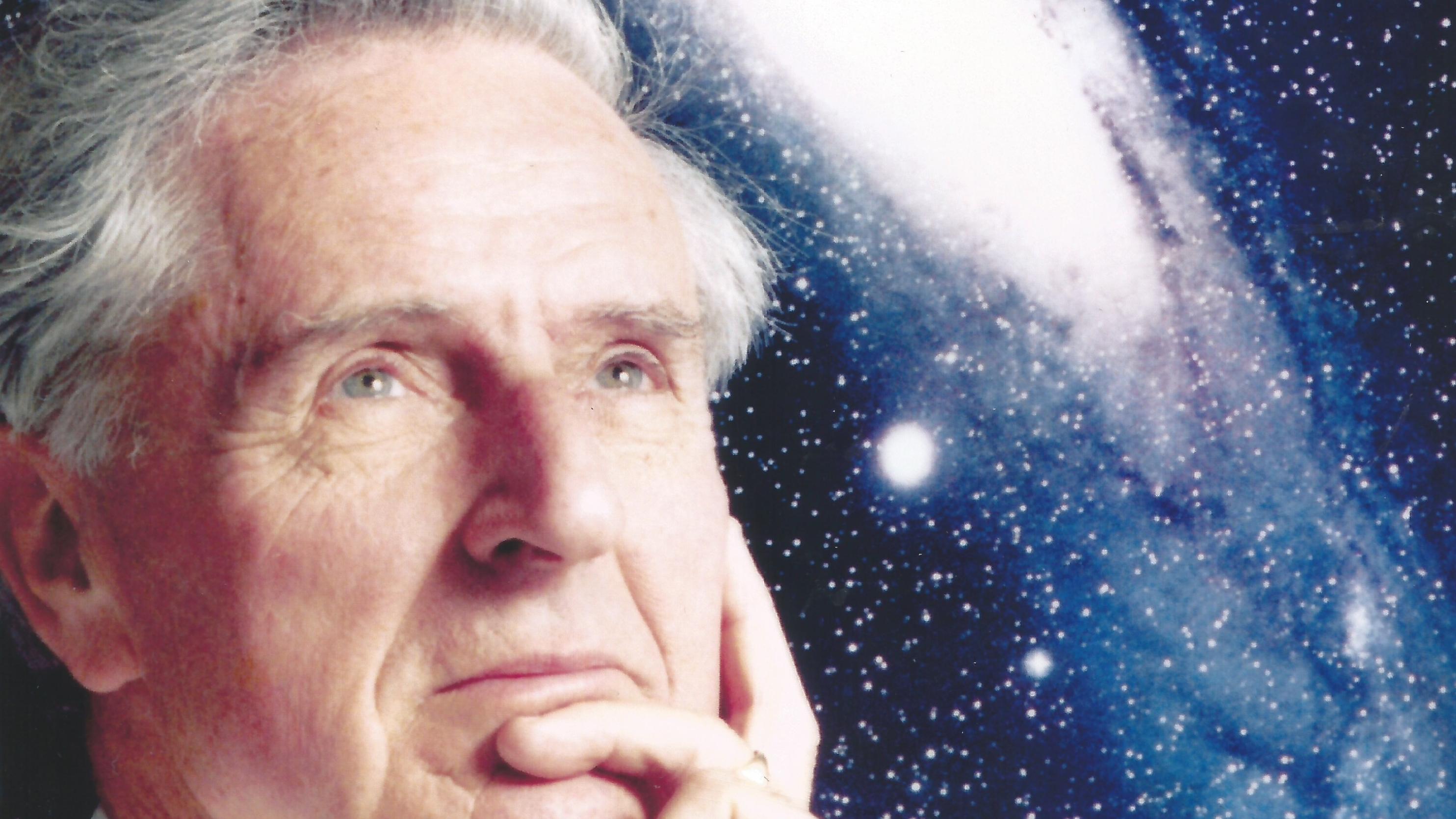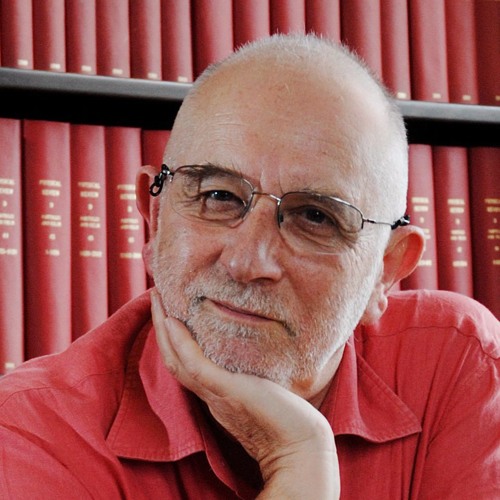Rochester Lecture archive
2009
| Title of the talk | |
|---|---|
|
(Front, left to right): Richard Abram, George Rochester's daughter Dorothy and son Tony, Professor Wilson Poon, Molly Corner, David Wagstaff and Derek Corner. (Back, left to right): Sir Arnold Wolfendale FRS, Martin Ward, Ian Smail and David Sills |
It's a bug's life: a survey of the physics of bacteria |
| Speaker | |
| Prof. Wilson Poon | |
| Description | |
| Bacteria are the `quanta' of biology - there are no known free-living organisms today smaller than the individual bacterium. In this lecture, Professor Wilson Poon argued that if physicists followed their usual methodology, the physics of life should have the study of bacteria as one of its main foci.
He surveyed the life of bugs from a physics point of view, and showed how 'bug physics' not only gives unique insights into a technologically and medically important class of organisms, but also raises fascinating fundamental questions concerning the origins and evolution of life as we know it. |
|
| About the Speaker | |
|
Professor Wilson Poon is an experimentalist in soft matter and biological physics, specialising in colloids and bacteria. Professor Poon also studies the relationship between science and religion. He is a member of the EU Marie Curie Initial Training Network Comploids (Physics of Complex Colloids).
He is renowned for employing a research philosophy in which well-characterised suspensions are used to throw light on phenomena that are ubiquitous throughout condensed matter physics, such as crystallisation and other phase transitions. Colloid science, as it's known, is important for applications ranging from drugs to dairy products an was pioneered by Albert Einstein. Less well known is that it can also illuminate basic physics questions, because in certain crucial respects, colloids behave as “big atoms.”
For a number of years, the Professor has concentrated on studying how glasses and gels flow, in particular the structure and dynamics of their arrested states. Understanding such states is a grand challenge facing 21st century physics; at the same time, they occur widely in a very large range of industrial processes and products. To that end he set up the Edinburgh Complex Fluids Partnership (ECFP) to coordinate industrial consultancy. Their clients now span many sectors, from food and confectionaries through personal care to specialty and agri-chemicals.
Funded initially by an EPSRC Senior Research Fellowship, and now continuing under an European Research Council Advanced Grant and an EPSRC Programme Grant, Professor Poon leads a team which has developed a versatile tool for imaging suspensions of both solid particles and liquid drops (emulsions) while their rheological properties are being measured. The group studies both active particles in the form of bacteria as well as synthetic colloidal swimmers with the long-term aim of discovering and understanding new modes of collective behaviour in active particle systems, both on their own, and in the company of passive particles. |
|
2008
| Title of the talk | |
|---|---|
|
Professor John Ellis FRS (centre) with George Rochester's son Tony and son-in-law David (next right) and senior members of the Physics Department (Georg Weiglein, Nigel Glover, Richard Abram and Sir Arnold Wolfendale FRS) |
Gauguin’s questions in particle physics: Where are we coming from? Where are we now? Where are we going? |
| Speaker | |
| Prof. John Ellis | |
| Description | |
|
Within particle physics and cosmology Gauguin’s questions may be interpreted as: What is the status of the Standard Model? What physics may lie beyond the Standard Model? What is the ‘Theory of Everything’? What were the early stages of the Big Bang? What is the material content of the Universe today? What is the future of the Universe? In the lecture Professor Ellis highlighted how new facilities and ideas in particle physics and cosmology can shed light on the questions raised by Gaugin. |
|
| About the Speaker | |
| Professor John Ellis is a leading physicist of The European Organisation for Nuclear Research (CERN) and Clerk Maxwell Professor at Kings College London.
Professor Ellis' research interests focus on the phenomenological aspects of particle physics, though he has also made important contributions to astrophysics, cosmology and quantum gravity. Most of his publications relate directly to experiment, from interpreting measurements and the results of searches for new particles, to exploring the physics that could be done with future accelerators. He was one of the pioneers of research at the interface between particle physics and cosmology, which has since become a sub-specialty of its own: particle astrophysics. He has long been an advocate and supporter of future accelerators, notably the LHC. He obtained a B.A. and a Ph.D. from Cambridge University and, after brief post-doc positions at SLAC and Caltech, he went to CERN where he has worked ever since. He was awarded the Maxwell Medal and the Paul Dirac Prize by the Institute of Physics in 1982 and 2005 respectively, and has been an Elected Fellow of the Royal Society of London since 1985 and of the Institute of Physics since 1991. He has been awarded Honorary Doctorates by the University of Southampton and by Uppsala University. He has twice won the First Award in the Gravity Research Foundation essay competition, in 1999 and 2005. |
|
2007
| Title of the talk | |
|---|---|
|
Professor Sir John Pendry FRS (seated, centre) with Rochester family members (Tony and Sylvia Rochester, David and Dorothy Sills) and senior members of the Physics Department (Richard Abram, Brian Tanner and Sir Arnold Wolfendale FRS) |
A Cloak of Invisibility: Harry Potter Does Electromagnetism |
| Speaker | |
| Prof. Sir John Pendry | |
| Description | |
|
Refractive materials gives us some limited control of light: we can fashion lenses, and construct waveguides, but complete control of light is beyond simple refracting materials. Ideally we might wish to channel and direct light as we please, just as we might divert the flow of a fluid.
Manipulation of Maxwell's equation shows that we can achieve just that provided we have access to some highly unusual material properties. Metamaterials open the door to this new design paradigm for optics and provide the properties required to give complete control of light.
One potential application would be to steer light around a hidden region, returning it to its original path on the far side. Not only would observers be unaware of the contents of the hidden region, they would not even be aware that something was hidden. The object would have no shadow. |
|
| About the Speaker | |
| Professor Sir John Pendry is a condensed matter theorist at Imperial College, London. He received his Ph.D. from the University of Cambridge in 1969 and worked at Bell Labs from 1972-1973. He has held his professorship in the Blackett Laboratory (Imperial College, London) since 1981. Shortly after, he became the head of the Physics Department and is currently the Chair in Theoretical Solid State Physics. He was named a Fellow of the Optical Society of America in 2005 and knighted (Knight Bachelor) in 2004.
Professor Sir Pendry has worked extensively on electronic and structural properties of surfaces developing the theory of low energy diffraction and of electronic surface states. Another interest is transport in disordered systems where he produced a complete theory of the statistics oftransport in one dimensional systems. In 1992 he turned his attention to photonic materials and this project culminated in the proposal in 2000 for a 'perfect lens' whose resolution is unlimited by wavelength. These concepts have stimulated further theoretical investigations and many experiments which have confirmed the predicted properties. In November 2013 Sir John received the Newton Medal, the highest honour of the UK's Institute of Physics (IoP). He was cited "for his seminal contributions to surface science, disordered systems and photonics". However Professor Pendry is perhaps most famous outside the world of Physics for proposing an idea for an "invisibility cloak" in 2006. The concept made use of metamaterials - whose properties are not defined by their chemical makeup but rather by their structure on the tiniest scales - to guide light around an object, rendering it in effect invisible. The idea came about originally when Marconi, a company for whom he was conducting consultation work, sought his advice on the other potential uses of a material they used to absorb radar. This led to a whole new area of research. |
|
2006
| Title of the talk | |
|---|---|
 |
Time: From Harrison's clocks to the possibility of New Physics |
| Speaker | |
| Prof. Sir Arnold Wolfendale FRS | |
| Description | |
| In the eighteenth Century, the brilliant horologist, John Harrison, solved the "Longitude Problem" and effectively won the 1714 Longitude Prize of £20,000. Since then, the accuracy of measuring "time" has improved continuously. An advance occurred 50 years ago with the introduction by Louis Essen of an "atomic clock". Each improvement has led to developments in our physical knowledge. The present accuracy, and that expected soon, leads to the possibility of discovering "New Physics". | |
| About the Speaker | |
| Prof. Sir Arnold Wolfendale was elected a fellow of the Royal Astronomical Society in 1973, and a Fellow of the Royal Society in 1977. He was Professor of Physics at Durham University from 1965 until 1992 and served as president of the European Physical Society (1999–2001). He was President of the Royal Astronomical Society from 1981-83.He served as Astronomer Royal from 1991 to 1995. In 1992, Wolfendale retired from teaching, and he was knighted in 1995. In 1996 he became Professor of Experimental Physics with the Royal Institution of Great Britain. A lecture theatre in Durham University's new Calman Learning Centre is named in his honour, as is a wing of the Physics building. He was an honorary DSc of Bucharest University and foreign member of the Bulgarian Academy of Sciences. | |
2005
| Title of the talk | |
|---|---|
 |
Making Light of Mathematics |
| Speaker | |
| Prof. Sir Michael Berry FRS | |
| Description | |
| Many 'mathematical phenomena' find application and sometimes spectacular physical illustration in the physics of light. Concepts such as fractals, catastrophe theory, knots, infinity, zero, and even when 1+1 fails to equal 2, are needed to understand rainbows, twinkling starlight, sparkling seas, and simple experiments on interference, polarization and focusing. | |
| About the Speaker | |
| Sir Michael Victor Berry, FRS, FRSE, FRSA (born 14 March 1941), is a mathematical physicist at the University of Bristol, England.
He is known for the Berry phase, a phenomenon observed e.g. in quantum mechanics and optics, as well as Berry connection and curvature. He specialises in semiclassical physics (asymptotic physics, quantum chaos), applied to wave phenomena in quantum mechanics and other areas such as optics. |
|


/prod01/prodbucket01/media/durham-university/departments-/physics/major-lecture-series/Hero-Header-bg-image.jpg)


